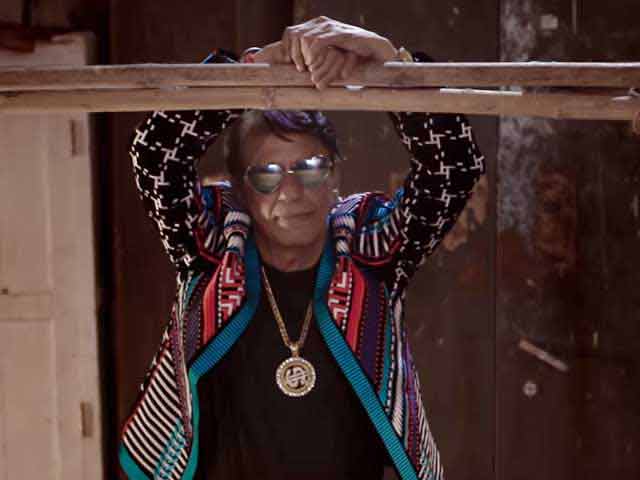The New Year ideally begins on 1 January and is celebrated all across the world but that is as per the Gregorian calendar. In India, it’s the harvesting season which marks the new year celebrations.
Every state in India has their own way of celebrating the new year. It’s what makes India culturally different yet culturally rich too. Most of these new year festivals are according to the Hindu calendar, that’s based on the movement of the moon. There are so many different traditions and customs followed during the harvest festival all across India.
As Indians get set to celebrate Baisakhi, Chaite Dashain, Bohag Bihu, Vishu and Puthandu today, let’s take a look at all the colourful Harvest Festivals that we Indians love to celebrate.
Chaite Dashain : Nepali New Year

Image Credit : blogspot.com
“Chaite Dashain ko shubhakamana,” to all our readers today! It is also called Chaitra Navaratri and is celebrated by Nepalis all across India. A Hindu festival that is a two day celebration, the first day is Ram Navami and second day is Dashami. It is celebrated in the month of Chaitra. The reason why Ashtami is celebrated as Chaite Dashain is because the day is considered to be exactly half a year. Similar to the bigger Dashain or Dusshera, this festival too symbolizes the victory of good over evil.
Baisakhi : Punjabi New Year

Image Credit : indiatoday.in
“Bhangre paaea, gidhe paaea Aao sare milke Vaisakhi da tyohaar manaaea”. Baisakhi is perhaps one of the biggest festivals for Punjabis. It’s celebrated across North India and usually falls on the 13th or 14th of April. The day is also celebrated as the day of the formation of the Sikh Khalsa. From fairs to colourful attires, good food and of course the bhangra, the Punjabis go all out to celebrate the day. The best celebration is Punjab’s Anandpur Sahib gurudwara. As you celebrate Baisakhi today, here’s wishing you a Happy Baisakhi!
Bohag Bihu : The Assamese New Year

Image Credit : india.com
Bohag Bihu is celebrated in the middle of April. It’s one of the most important festivals for the Assamese. Besides the Bohag Bihu, there are two bihu festivals in Assam; Maagh and Kati. Kati Bihu falls in October, while Bhogali or Magh Bihu is celebrated in January. The Bhogali Bihu is also all about food! The Bohag Bihu always coincides with Baisakhi even though the two states are far from each other.No Bihu is complete without the Bihu dance. We hope the Bihu songs and dance, usher in joy and brighten your day, today!
Vishu : Malayalam New Year

Image Credit : freepressjournal.in
Like most other Harvest festivals in India, Vishu also is usually on 14 April. It is an important festival in Kerela. Vishukkani basically means the first object viewed in the morning. People visit various Lord Vishnu temples on Vishu since they believe that Lord Vishnu should be seen first thing in the morning on this day. The most important offering to God Vishu, is the Konna flower which blooms during the Vishu season. As you celebrate Vishu toda, we hope you have a blessed and prosperous Vishu!
Puthandu : Tamil New Year

Image Credit : rompttravels.com
‘Puttantu valttukkal’! to you today. Yep, that means Happy New Year and that’s how the Tamil people greet each other. They pray to Lord Brahma as they believe he began his creation on this day. While the people of Punjab and Assam celebrate the festival with dances, here youngsters indulge in a game of Por Thenkai, a coconut war, which is played in villages throughout Tamil Nadu. Mangai Pachadi, made of raw mangoes, jaggery and neem flowers is the specialty on Puthandu. The Panchangam or the almanac is read by the eldery in the family on this day.
Ugadi : Telugu New Year Ugadi

Image Credit : utsavpedia.com
Ugadi is one festival that I would definitely like to be a part of. It’s all about the celebration of the six tastes of a human life. Human life is filled with some sweet, salty, bitter, sour, tangy and spicy moments, hence event. The people of Andhra Pradesh, Telangana, Maharashtra, Karnataka and Goa are the ones who celebrate Ugadi, even though it is known by different names.
Gudi Padwa : Marathi New Year

Image Credit : indiatimes.com
A stick covered in a bright yellow cloth, with a flower garland around it, and covered with an inverted silver or copper pot, is placed at the entrance of every Maharashtrian’s house on Gudi Padwa. There are two theories as to why Gudi Padwa is celebrated. On the one hand, some believe that Chhatrapati Shivaji Maharaj was the one who invented the day, while others say, that it is to mark the day when Lord Brahma created the world after the great flood. If you love Shrikhand, Puran Poli and Aloo Puri this is the best time to pay your Maharashtrian friends a visit!
Pohela Boishakh : Bengali New Year

Image Credit : amazonaws.com
There are many interesting theories as to why the Bengali New Year is celebrated but the most interesting one is how it is connected to Mughal Empire and their tax collecting customs. The old Bengal, followed a solar calendar called Fasholi Shan or a harvest calendar. But since the Mughal;s who collected tax from the Bengali people, followed the Hijri calendar, the crops would not yet be ready and it was difficult for the Bengali people who were dependent on crops. Therefore when Akbar became the third Mughal emperor, he asked the royal astronomer to combine the lunar and solar calendars and create a new calendar. Interesting isn’t it?
Bestu Varas : Gujarati New Year

Image Credit : asiaone.com
Bestu Varas is celebrated on the first day of Kartik month as per the Gujarati calendar, unlike most other religions celebrate their New Year at the time of Chaitra month. There is an interesting reason to this, it is believed that on this day, Lord Krishna saved people from the heavy rain by lifting the Govardhan Parbat on his little finger and providing the people shelter under it. That is also the reason why Govardhan Puja is observed on this day.
Losoong : Sikkimese New Year

Image Credit : YouTube
Losoong marks as the end of harvesting season along with the end of the tenth month of the Tibetan Year. People pray for an even better harvest in the coming year. It is celebrated with events like Archery competitions and the Chaam dancing at the monasteries at Palace (Tsu-La-Khang), Phodong and Rumtek in Sikkim. It is believed that these dances are for exorcizing of the evil spirits of the year gone by, and welcoming the good spirit. An alcoholic beverage, Chi Fut is offered to the gods and at midnight the effigy of the demon king, Laso Mung Punu is burnt. The Chaam dance is something worth seeing.
Navreh : Kashmiri New Year

Image Credit : awaaznation.com
Not too long back, this year, Priyanka Gandhi Vadra was trolled on Twitter after she greeted Kashmiri people by wishing them ‘Nauroz Mubarak’! While Nauroz is a Parsi festival, Navreh is what the Kashmiri Pandits celebrate. It is their new year. In a tweet, Priyanka wrote, “Nauroz Mubarak to all my Kashmiri sisters and brothers!! Despite my mother’s ‘don’t forget to make the thali’ messages, I had no time to make my thali (plate) yesterday but came home after (a) roadshow and found it placed on the dining table. How sweet are moms?”
But what she was referring to here was the Navreh thaal, which is a ritual followed by the Kashmiri Pandits on new year! This thali consists of unhusked rice, a slice of bread, a cup of curd, some salt and sugar candy, a few walnuts or almonds, a silver coin, a pen, a mirror, some flowers and the new panchanga or almanac. This thali or platter is prepared the previous night and is seen as the first thing as soon as one wakes up on Navreh.
Hijri : Islamic New Year

Image Credit : gulfnews.com
Did you know that the Islamic calendar has 12 months but only 354 days? It is based on the lunar year. The Islamic New Year begins on the first day of the first month of the Islamic calendar. The Islamic year start on the first day of Muharram. Unlike the other New Year festivals around the country, Hijri is low key and they mostly indulge in religious activities.
Cheti Chand : Sindhi New Year

Image Credit : ninecolours.com
From Dal Pakwan to the delicious Sindhi Kadi, you enter any Sindhi household on this day and it’s filled with the aroma of the yummy Sindhi food. Cheti Chand is celebrated on the second day of the Chaitra month. The Sindhi community celebrates to honor the birth of Jhulelal, on this day.
We’ve listed these interesting facts surrounding the harvest festival, so that you don’t get trolled like Priyanka Vadhera Gandhi! Though we believe, whether Navreh or Navroze, it’s all the same, it’s the time for families and friends to get together and have a good time and hope and pray for a better year.













